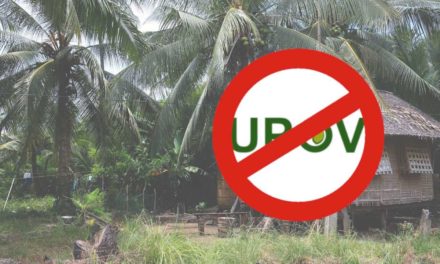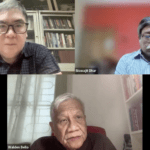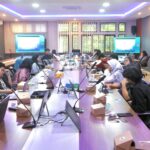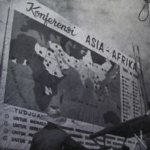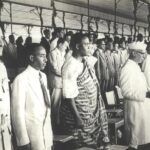by Kamal Malhotra
The Multilateral Development Bank (MDB) system clearly has major dilemmas of a multiple nature which are impacting on both its identity and role in S.E. Asia, especially in the poor countries of the lower Mekong Basin sub-region comprising Laos, Cambodia and Vietnam.
Firstly, on the one hand, key MDB’s such as the World Bank are faced with dwindling resources for IDA, its concessional lending arm, (which allows it to say that it is the world’s largest provider of aid for poverty reduction). On the other, however, the IFC, the Bank’s private sector lending arm, (renowned for its multinational company rather than direct poverty reduction preferences), has been growing at double digit rates, far surpassing the growth rates of the rest of the Bank group put together.
Secondly, while the first dilemma has led to NGO and other critics berating the Bank for being a bank rather than a development institution and for being anti-poor, Wall Street investment bankers and their brethren simultaneously criticize the Bank for supporting inefficient government bureaucracies and for being a “second-rate” private sector financier.
Thirdly, the Bank’s overall (including IFC and other non-IDA) funding potential is becoming obviously smaller and smaller when compared with the officially proposed or projected infrastructure needs of many regions of the world, especially East and South-east Asia where these are astronomical and where private sector resources are much larger in volume, more readily available and quite willing to assume a financier role, (even in “uncreditworthy” low-income IDA-only countries for certain “profitable” projects) as long as all the critical risks are met by others (eg. the government and its people).
Shifts in the World Bank’s identity and role, especially in the Mekong Basin sub-region and other parts of S.E. Asia need to be analyzed against this changed and continually changing external context.
The World Bank believes that its survival will depend on a major reconfiguration of its role and identity as the significance of multilateral and bilateral assistance continues to diminish in importance, becoming increasingly subservient to private capital flows (as is already the case in this region of the world).
The new roles identified by the Bank in response to this changed context are primarily twofold: those of simultaneously providing strategic policy advice to governments and financial guarantees to the private sector (against so-called “sovereign” default by the very same governments it is giving policy advice to!). These roles, especially the latter, are very different from the more traditional role (of project funding to developing country governments through concessional and other loans) that the Bank has largely played in the past fifty-three years.
The World Bank group, however, sees such a reconfiguration of its role and identity as absolutely crucial to the maintenance (and, hopefully, enhancement) of its overall significance as an influential global policy maker.
No where is this changing Bank group role more evident in this region than in Laos, one of the developing world’s poorest IDA-only “uncreditworthy” countries where there is explicit private sector interest in the multitude of large infrastructure (eg. hydrodam) projects currently in the pipeline.
In addition to continuing its strategic role of “structurally adjusting” Lao PDR’s macro and sectoral economy (from a centrally planned to a market-oriented one), the World Bank sees its new role in Laos as stimulating large private sector capital inflows for hydrodams and other large-scale infrastructure projects through the provision of a mix of financial “enclave” partial risk guarantees, IFC “A” and “B” loans and IDA credits. Indeed, to the best of my knowledge, this is the first time that such a financial combination is being discussed for a project in an IDA-only country (eg. the Nam Theun II hydrodam in Laos).
The financial guarantee is an instrument which has largely been dormant for much of the Bank’s fifty-three year history. While it has sometimes been used for IBRD countries since the mid-1980s, its use, thus far, has been disallowed by the Bank’s Board in the case of IDA-only countries such as the Lao PDR. Soon, however, the World Bank’s Board will consider whether to waive this exclusion to allow “enclave” guarantees for large-scale infrastructure projects in IDA-only countries (i.e. the Nam Theun II hydrodam in Laos) in certain circumstances (eg. when large foreign exchange denominated revenues are projected).
The rationale for this Board discussion appears to derive directly from the enclave guarantee’s potential role in Laos since the Nam Theun II dam is the only project for which Bank management is currently recommending an enclave guarantee arrangement.
Nam Theun II, and Laos, therefore, are playing a key role in providing the stimulus for a much broader and far-reaching strategic shift in the World Bank’s future global role. Without Nam Theun II, such a change in Bank policy would be unnecessary at the current time and would clearly not take on the urgency with which it is currently being pursued.
Indeed, the Nam Theun II dam is clearly the intended “test case” or guinea pig for the World Bank’s use of the partial risk “enclave” guarantee. This type of Bank role is likely to be increasingly dominant in this region of the world (and in South Asian countries such as India and Pakistan) in the future. Its use in Lao PDR, if approved, will therefore require even more closer monitoring and assessment than would otherwise have been the case.

